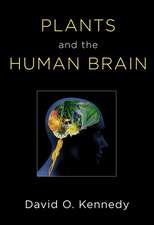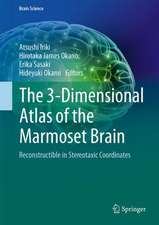Computational Theories and their Implementation in the Brain: The legacy of David Marr
Editat de Lucia M. Vaina, Richard E. Passinghamen Limba Engleză Hardback – 3 noi 2016
Preț: 421.79 lei
Preț vechi: 580.00 lei
-27% Nou
Puncte Express: 633
Preț estimativ în valută:
80.73€ • 87.73$ • 67.86£
80.73€ • 87.73$ • 67.86£
Carte tipărită la comandă
Livrare economică 10-16 aprilie
Preluare comenzi: 021 569.72.76
Specificații
ISBN-13: 9780198749783
ISBN-10: 0198749783
Pagini: 272
Dimensiuni: 178 x 253 x 20 mm
Greutate: 0.64 kg
Editura: OUP OXFORD
Colecția OUP Oxford
Locul publicării:Oxford, United Kingdom
ISBN-10: 0198749783
Pagini: 272
Dimensiuni: 178 x 253 x 20 mm
Greutate: 0.64 kg
Editura: OUP OXFORD
Colecția OUP Oxford
Locul publicării:Oxford, United Kingdom
Notă biografică
Professor Lucia M. Vaina received an MS in mathematics from University of Timisoara and Pavia, PhD in mathematical logic from the Sorbonne and MD PhD (neuroscience) from the University of Toulouse. Her postdoctoral training was at UC Berkeley, Stanford and MIT. She joined the faculty of Boston University and Harvard Medical School in 1986 and in 1995 she was promoted to tenured Professor of Biomedical Engineering at Boston University. She is among the first visual neuroscientists that studied the effects of lesions on visual motion perception in humans, by using psychophysics, biologically constrained computational modeling, and MRI, fMRI and MEG. She characterized the cortical mechanisms underlying visual motion tasks, and alternate mechanisms used by motion impaired patients. She studied psychophysically&computationally aspects of perceptual learning of motion discrimination and used fMRI to elucidate their neural substrate Professor Richard E. Passingham received his BA from the University of Oxford and his Ph.D in Psychology from the University of London. He returned to Oxford in 1970 and was made a University Lecturer and Fellow of Wadham College in 1976. He was amongst the first to use brain imaging to study human cognition, starting in 1988 at the MRC Cyclotron Unit at the Hammersmith Hospital where he was an Honorary Senior Lecturer. In 1996 he moved to the newly founded Wellcome Centre for NeuroImaging at the University of London where he was an Honorary Principal. He was made Professor of Cognitive Neuroscience at Oxford in 1997.


























